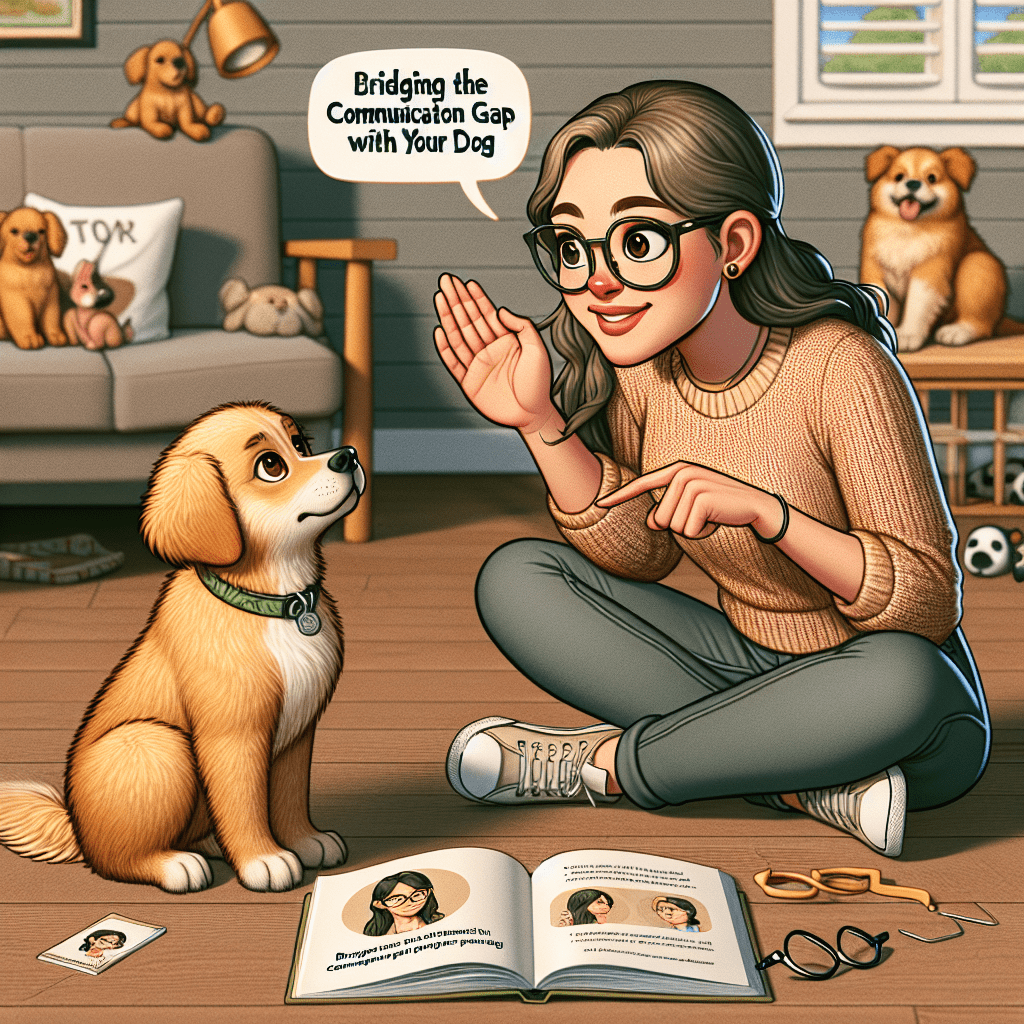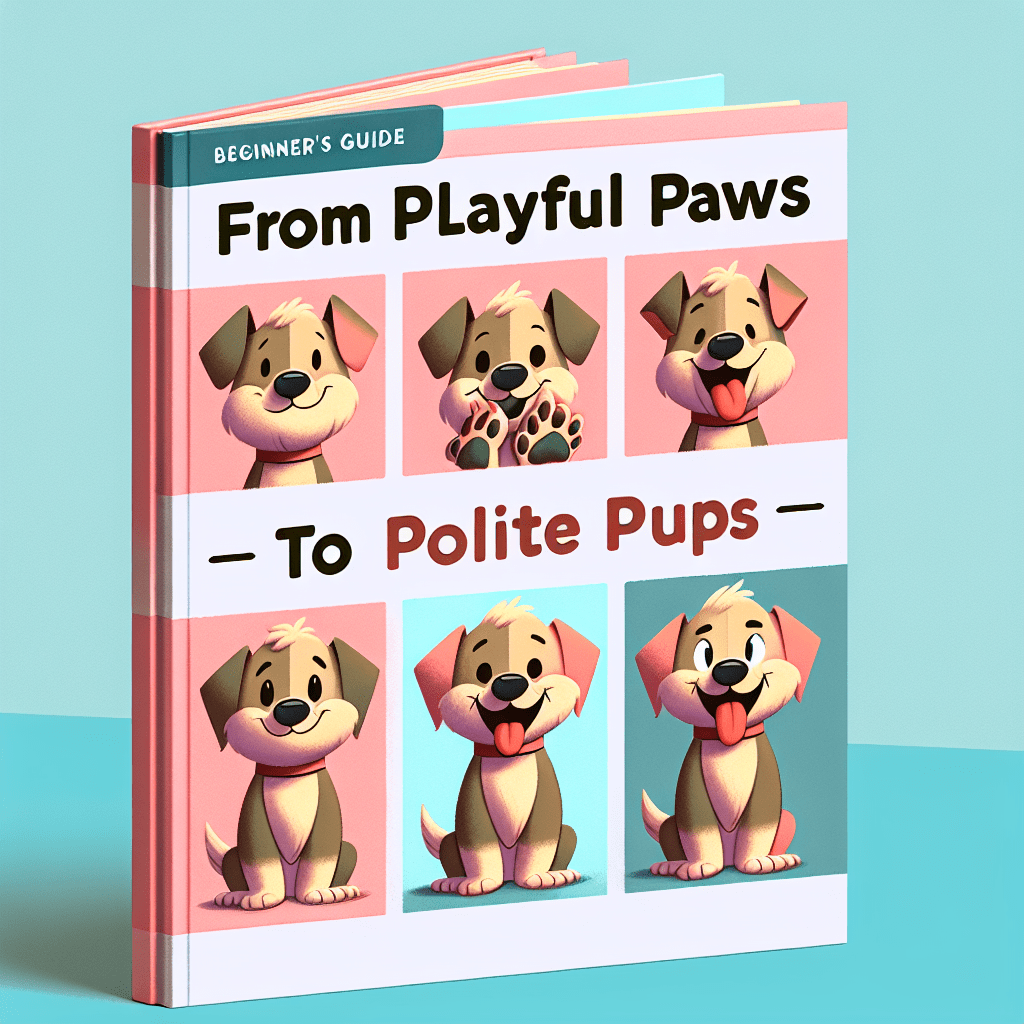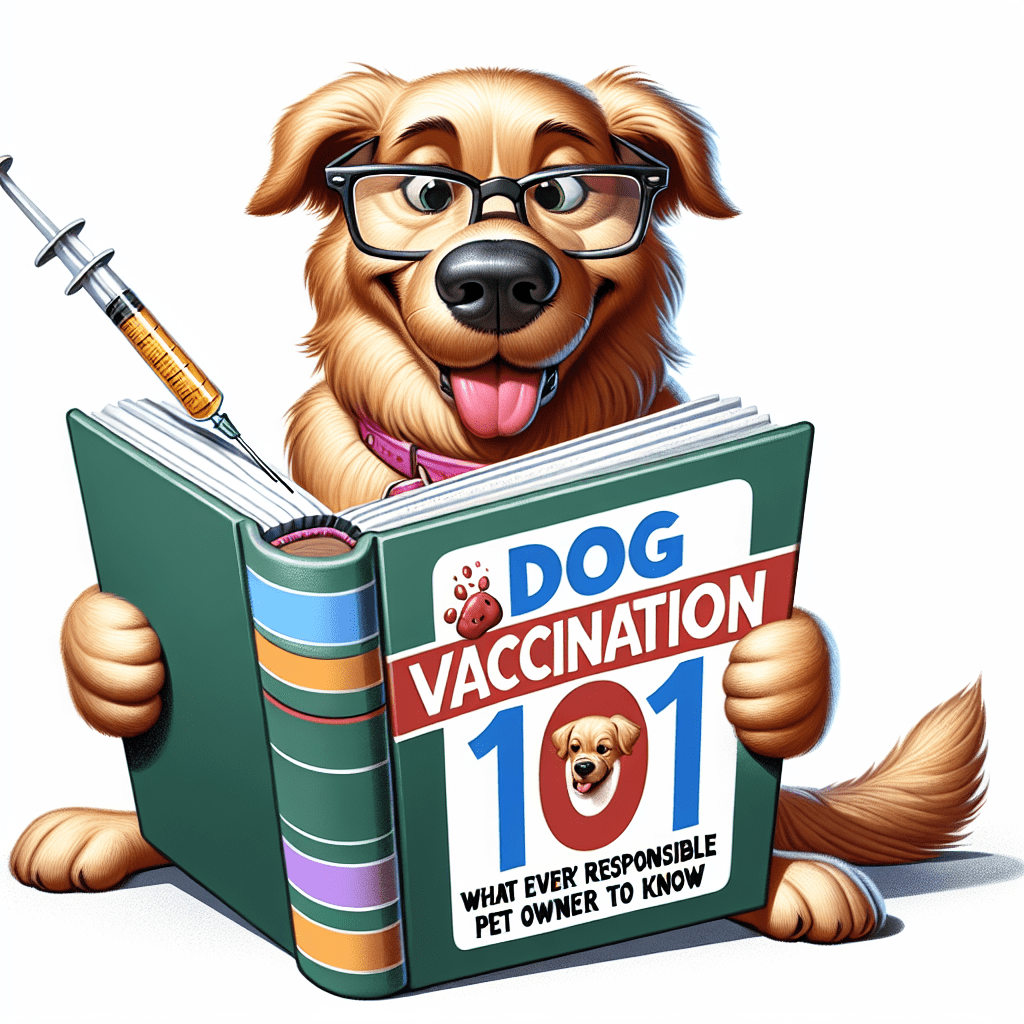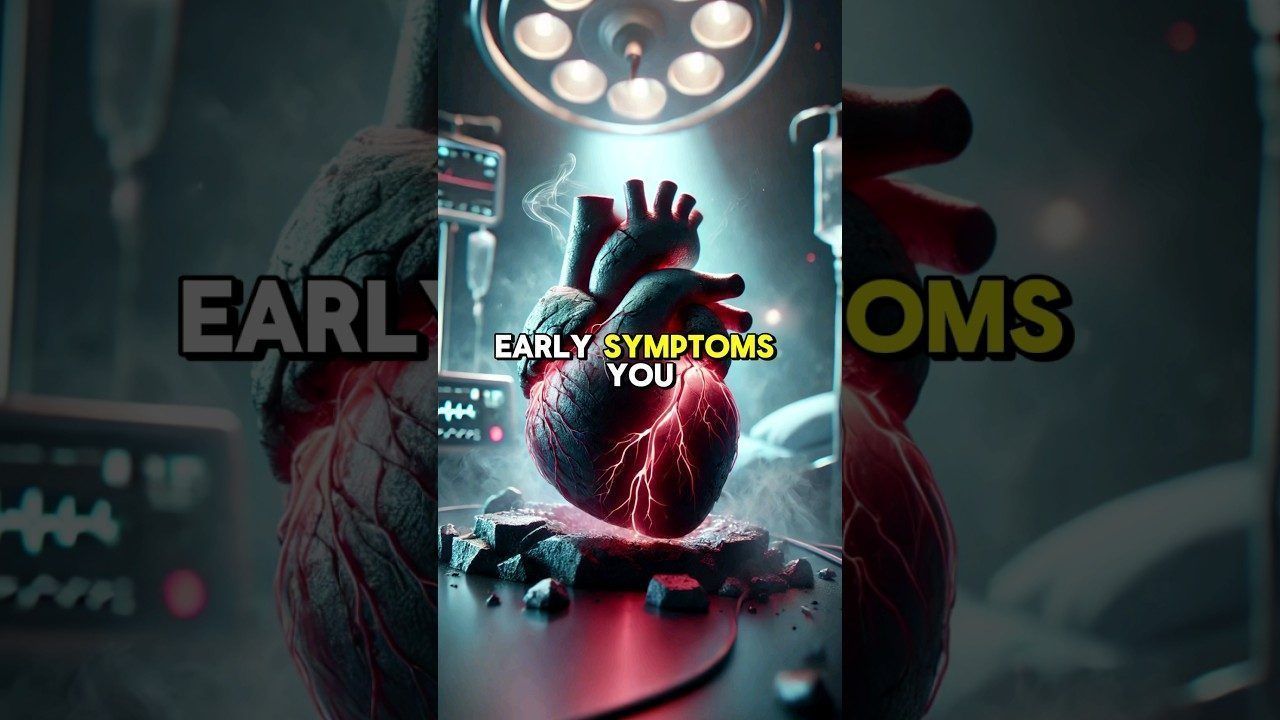Get your free Book Here

Bark to the Future: Mastering Canine Communication for a Stronger Bond
As a devoted dog lover, I can wholeheartedly attest to the profound connection we can share with our furry companions. Each wag of a tail, every excited bark, and even the occasional grumble tell stories that go beyond the words we speak. It’s easier said than done, though; dogs, like people, have their own unique ways of communicating, and understanding those nuances can drastically enhance the bond we share with them. In this blog, "Bark to the Future: Mastering Canine Communication for a Stronger Bond," we’ll delve into eight comprehensive chapters that explore the art of canine communication, allowing you to deepen your relationship with your furry friend.
1. Understanding Dog Language: The Basics
Dogs communicate through a variety of signals—some obvious, while others may require a discerning eye. Understanding dog language starts with recognizing their body posture, movements, and vocalizations.
-
Tail Positioning: A high, wagging tail typically indicates excitement and happiness, while a low tail could suggest fear or submission.
-
Ears and Eyes: Ears perked up and facing forward signal curiosity; a dog’s eyes can reveal a lot too. Soft, relaxed eyes indicate contentment, while wide, bulging eyes may show fear or anxiety.
-
Vocal Cues: Dogs use barks, growls, whines, and howls to express their feelings. Pay close attention to the context and the tone of these vocalizations to understand what your pup is trying to convey.
Once you start piecing together these signals, you’ll find that your dog has a treasure trove of emotions and messages to share with you!
2. The Bonding Effect: Building Trust Through Communication
Bonding with your dog goes beyond basic interactions; it hinges on trust and a deep understanding of one another. Establishing trust begins with effective communication.
-
Consistency is Key: Use consistent commands and cues to prevent confusion. If you say “sit,” make sure to always use that same command rather than switching it with “sit down” or “take a seat.”
-
Positive Reinforcement: When your pup understands what you want and responds positively, reward them with treats or affection. This not only reinforces their learning but builds trust as they see that following your commands bears delightful results.
-
Quality Time: Spend quality moments together, whether it’s through training sessions or simple playtime. These shared experiences fortify your bond—after all, communication is a two-way street.
3. The Power of Body Language: What You Should Know
Like any good friendship, non-verbal communication often speaks volumes about feelings and intentions. Dogs rely heavily on body language, both their own and that of others.
-
Posture: Is your dog standing tall, or are they hunched down? An upright posture exudes confidence, while a crouched stance may indicate fear.
-
Approaching Stance: If your dog is directly facing another dog or person with an erect posture, it can be interpreted as a challenge. Alternatively, a side-on approach often signifies friendliness and openness.
-
Play Bow: If you’re lucky enough to witness your dog doing a play bow (front legs extended forward, hindquarters raised), your pup is inviting play—what a sweet invitation to both communication and fun!
By mastering the myriad of body language signals your dog produces, you will open up an entirely new realm of understanding, making your bond richer and more intuitive.
4. Dogs and Humans: The Vocal Connection
The vocal connection between dogs and humans is fascinating. Our furry friends are often vocal about their needs, emotions, and desires. Learning to interpret these vocal signals can strengthen your communication significantly.
-
Barking: Not all barks are created equal! A higher-pitched bark could indicate excitement, while deeper barks could signal warning or alertness. Observe the context; if your dog barks when they hear a knock at the door, they’re likely alerting you rather than trying to express joy.
-
Whining: Whining often indicates a desire for something—be it attention, food, or relief outside. When your dog whines, try to assess the situation. Responding with patience and attention can help you understand their needs better.
-
Growling: While growling can be a serious warning, it can also express excitement during play. Context is critical; learning to identify when your pup is issuing a warning versus expressing playful growls helps maintain harmony in your relationship.
Fostering a more profound understanding of your dog’s vocalizations will guide you in responding appropriately to their needs and feelings.
5. Training Techniques: Communicating Effectively with Your Dog
Training is an essential aspect of building a happy and well-adjusted pet. Effective communication during training sessions paves the way for success.
-
Clear Cues: Use simple, distinct verbal and non-verbal commands. For example, employ a unique hand signal for “sit” to complement your verbal command. The clearer you are, the more likely your dog will understand.
-
Positive Reinforcement: Reward behavior you want to encourage. Using treats, praise, or toys reinforces communication. Your dog associates positive experiences with specific actions and commands, forming stronger connections.
-
Short Sessions: Dogs, especially puppies, have short attention spans. Keep training sessions brief but consistent; this not only is more effective but also makes the process enjoyable for both of you.
Training isn’t just about obedience—it’s a language unto itself and can serve as a bonding experience when executed as a harmonious conversation between you and your pup.
6. Emotions Unleashed: The Role of Empathy in Canine Communication
Empathy is a crucial ingredient in understanding our canine partners. Dogs are incredibly attuned to human emotions, and a strong emotional connection benefits both parties.
-
Recognize Your Mood: Your dog picks up on your emotional state. If you’re anxious, your pup may express concern or anxiety. Conversely, if you radiate calmness, your dog is likely to mirror that energy.
-
Understanding Canine Anxiety: Recognizing signs of anxiety in dogs can help you provide the necessary comfort. A nervous dog may exhibit pacing, whining, or hiding. Be empathetic and offer solace without overwhelming them.
-
Shared Experiences: Engage in activities that promote emotional connection. Whether a leisurely walk or cuddly moments on the couch, these experiences keep you in tune with your dog’s feelings.
Developing emotional intelligence through empathy can foster an unbreakable bond while ensuring your pup feels secure and understood.
7. Overcoming Communication Barriers: Addressing Challenges
Communication barriers can appear for various reasons. Addressing these challenges thoughtfully can lead to more robust bonding over time.
-
Behavioral Issues: Often, behavioral issues stem from misunderstandings. If your dog is consistently acting out, evaluate how you’re communicating your expectations. Seek guidance from professionals if necessary.
-
Reinforcing Habits: It’s human nature to fall into patterns. If a certain command feels like a chore, both you and your pup may struggle with motivation. Inject fun by varying your routines or introducing new games during training.
-
External Factors: Loud noises, unfamiliar surroundings, or inadequate socialization can impede effective communication. Create safe spaces for your pet where they feel at ease to express themselves.
By tackling communication barriers head-on, you’ll be able to transcend misunderstandings and usher in a new era of camaraderie.
8. Celebrating Your Connection: The Journey Ahead
Once you’ve begun to embrace the world of canine communication, the possibilities for your relationship with your dog become boundless.
-
Strengthening the Bond: Celebrate the small victories during your journey together. Whether mastering a new trick or simply enjoying a peaceful afternoon at the park, cherish these moments with your canine companion.
-
Continual Learning: Dogs, like humans, evolve. They learn and adapt, and as responsible pet owners, so should we. Continue to challenge yourselves with new skills, activities, and training techniques to keep the communication flowing.
-
Join Community: Connect with other dog lovers. Attend locally organized training and socialization sessions that can enrich both you and your dog’s experience.
The road ahead is filled with infinite possibilities. With every wagging tail and loving nuzzle, you and your pup are writing the next chapter of your life together.
Conclusion
In the rich tapestry of life with a dog, mastering communication is the golden thread that binds us together. As we unlock the secrets of canine language—whether vocal cries or subtle body signals—we find ourselves on a rewarding journey toward deeper understanding and companionship.
By employing the strategies outlined in this blog, you’re not just creating a well-behaved dog; you’re forging a meaningful connection rooted in trust, empathy, and mutual respect.
So let’s embark on this journey together! Take the time to connect with your pup, listen carefully, and communicate effectively. You’re not only uplifting their spirit, but you’re nurturing the beautiful bond that exists uniquely between you. Let’s bark to the future of canine communication and all the love it brings!
FAQs
Q1: What’s the best way to communicate my commands to my dog?
A1: Consistency is key! Use distinct commands, both verbal and non-verbal, and always reinforce with positive actions when your dog responds correctly.
Q2: My dog seems anxious; how can I help him?
A2: Understanding and empathizing with your dog’s feelings is crucial. Create a calming environment, reduce exposure to anxiety-inducing stimuli, and establish a routine to help your dog feel secure.
Q3: Can I train my older dog?
A3: Yes! Dogs of all ages can learn new commands and skills. Training sessions may need to be shorter, but older dogs often bring a wealth of experience and patience to the learning process.
Q4: What should I do if my dog is growling?
A4: Assess the situation carefully. Ignoring a growl can lead to bigger problems; instead, try to understand the context. If your dog is growling out of fear, remove them from the situation calmly.
Q5: How can I ensure my dog trusts me?
A5: Establish trust through consistency, positive reinforcement, and spending quality time together. Your empathy and understanding will naturally pique their trust.
Centered Text:
Unlock the Secrets to a Well-Behaved Dog! 🐾 Tired of your pup’s bad habits? Discover how to transform your unruly dog into a loving companion with our FREE Dog Training Mini Course! Learn essential commands, potty training tips, and effective techniques to eliminate unwanted behaviors in just days. Don’t miss out—sign up now and start your journey to a happier, obedient dog! Join Here! (https://bit.ly/3RJak0a)
Centered Text:
Instantly Access Your Free Children’s Books Here! (https://payhip.com/BlueCherryStore) –
Disclaimer: As an Amazon Associate, I earn from qualifying purchases; I may earn a commission from qualifying purchases as an affiliate. Please note that I only recommend products I believe will provide value to my readers. (M)







